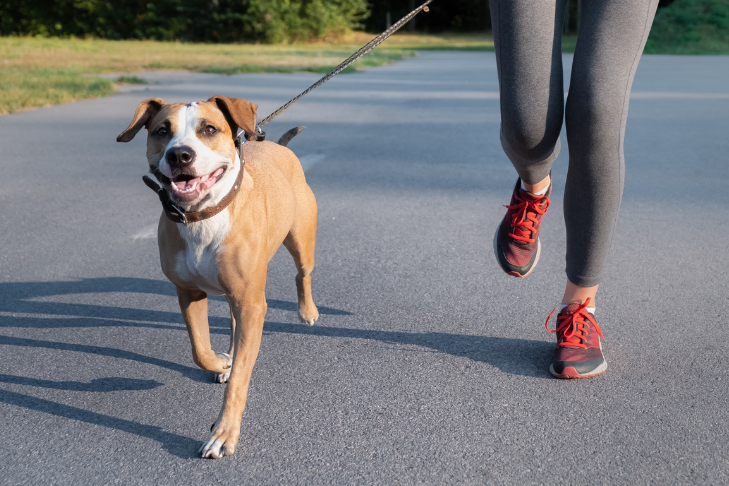How Much Exercise Does a Dog Need?

By Stephanie Gibeault, MSc, CPDT
Wondering if your dog is getting enough physical activity? Whether you’re raising a high-energy puppy or supporting a senior dog’s mobility, understanding your pet’s exercise needs is key to their overall health and happiness.
Exercise Needs Vary by Dog Breed
All dogs benefit from daily physical activity, but exercise requirements can differ widely based on breed. A lazy weekday pup can’t become a weekend warrior without risking joint discomfort. Consistent activity supports your dog’s physical conditioning and prevents destructive behavior caused by excess energy. But how do you determine the right amount of exercise for your dog?
For example, a Chihuahua or Bulldog may only need a short walk around the block, while a Border Collie or Nova Scotia Duck Tolling Retriever may require much more intense activity. Tailoring your dog’s routine based on their breed is essential. Learn more about how much exercise your dog needs by considering their history and purpose.
Understanding your dog’s breed—or breed mix—can give you insight into their natural energy levels. Breeds like Shih Tzus, originally bred as companions, are naturally more relaxed, while Dalmatians were developed for long-distance running. Knowing your dog’s background helps ensure you’re providing the right exercise level for their body and mind.
Every Dog is Unique: Watch for Behavioral Clues
While breed traits offer helpful guidelines, every dog has their own personality and stamina. Some Labrador Retrievers are more low-key, while some Bernese Mountain Dogs have endless energy. Pay attention to your dog’s cues—if they resist walks or slow down on hikes, they may be overtired. On the flip side, if they’re overly hyper, jumping, or chewing furniture, they likely need more stimulation.
This is especially important for mixed-breed dogs whose lineage is unclear. Observe their behavior and energy levels, and speak with your veterinarian to design a custom exercise routine that factors in your pet’s age, weight, and health status.

How Much Exercise Do Puppies Need?
Puppies may seem like they never stop moving, but too much physical activity can actually harm their developing bodies. Their joints and bones are still forming, so avoid high-impact play or long hikes. Activities like jumping should be limited until they’ve matured. Learn more about safe puppy adventures and outdoor tips. Always consult your vet about age-appropriate exercise for growing dogs.
Keeping Senior Dogs Active Safely
Even in their golden years, dogs benefit from regular exercise. Light walks, gentle play, and enrichment games help prevent weight gain and stiffness. That said, you may need to adapt your routine for older dogs. Consider daily wellness supplements to support mobility and comfort as your dog ages.
Fun and Safe Ways to Exercise Your Dog
Choose activities that match your dog’s health, energy, and interests. Here are several effective ways to keep your dog active:
- Take daily walks with new routes to engage their nose and mind.
- Go for a jog or hike—off-leash only in safe areas with solid recall training.
- Bike alongside your dog once they’re trained to stay safe and focused.
- Try dog sports like agility or flyball for physical and mental engagement.
- Play indoor fetch or stair games to burn energy in small spaces.
- Go swimming—great for dogs with joint sensitivity (use a life jacket!).
Mental stimulation matters too. Train new tricks, play scent games, or use puzzle feeders to challenge your dog’s brain. Enriching both body and mind leads to a calmer, healthier, and more content pup.


